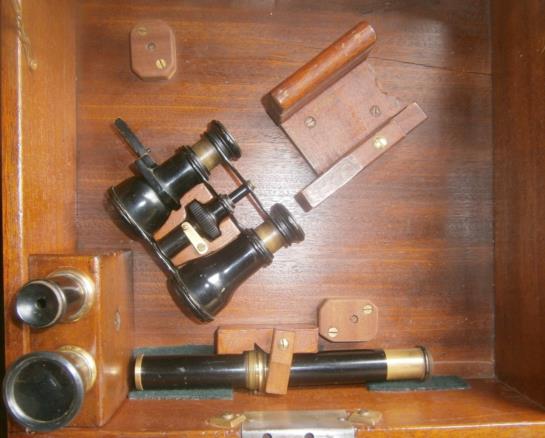
NavList:
A Community Devoted to the Preservation and Practice of Celestial Navigation and Other Methods of Traditional Wayfinding
From: Bill Morris
Date: 2015 Aug 30, 15:46 -0700
Frank and others
I am not at all confident that all three figures are pointing in the same direction. We see the faces of the two outer ones in profile, while the face of the central one is more a three quarter view turned towards us, and this would account for the appearance of an octant.
C Plath fitted some vernier sextants of this era with an "endless tangent screw" of the Heath and Co pattern and it is possible to move the knob with just the forefinger. However, it is much easier and steadier to turn the knob using thumb and middle finger, while resting the edge of the frame on the extended forefinger.
C Plath also supplied some of their sextants with a pair of opera glasses, which would provide the brain with 1.414 times as much information (https://sextantbook.com/?s=A+fine+C+plath ) as a single telescope.
The officer seen using a sextant without a telescope is doing what I do when there is a lot of motion of the ship, as on HMB Endeavour, which rolls so much that it is difficult sometimes even to acquire the sun, never mind bring it down to the horizon. I put the telescope in my pocket, bring the sun down without and then replace the telescope. Sweeping the horizon beneath the sun quickly finds it and the observation can then be fined up. Captain Cook it seems did not use a telescope often, on account of the motion of the ship. Galilean telescopes of that time until well into the second half of the nineteenth century had apertures of only about 15 mm and so had a very restricted field of view.
Bill Morris
Pukenui
New Zealand







